

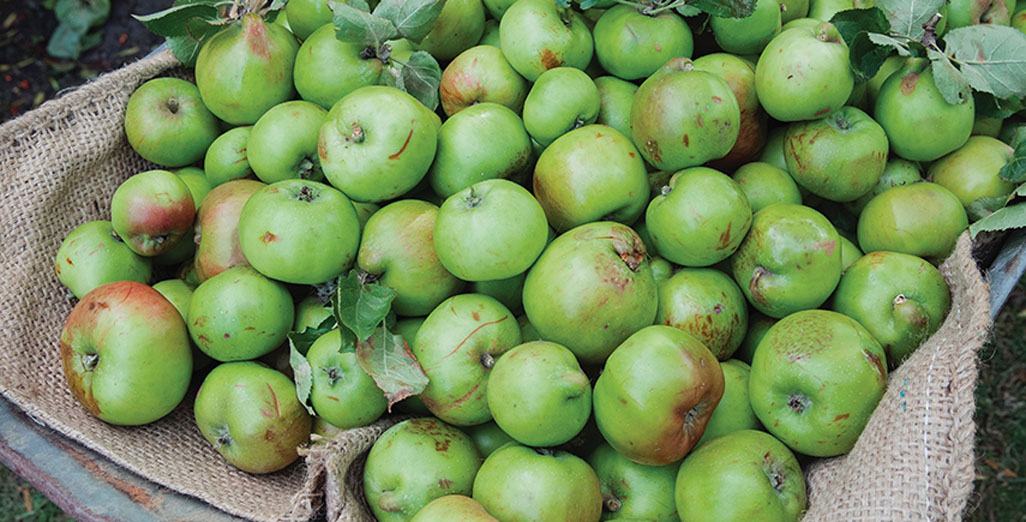 Cover and book design by Lora Westberg Edited by Emily Beaumont Cover images: All images by Julia Rutland All images copyrighted. All images by Julia Rutland unless otherwise noted. Africa Studio/ Photos identified by page in alphabetical order using a, b, c, d, e, f Used under license from Shutterstock.com: Potapov Alexander: These images are licensed under the CC0 1.0 Universal (CC0 1.0) Public Domain Dedication license, which is available at https://creativecommons.org/publicdomain/zero/1.0/: USDA, artist Royal Charles Steadman: Northern Spy, 20; USDA, artist Deborah Griscom Passmore: Winesap, 21 Cosmic Crisp image used courtesy of The Cosmic Crisp Team : 17; SugarBee image used courtesy of Chelan Fresh (www.chelanfresh.com): 21 10 9 8 7 6 5 4 3 2 1 Apples: 50 Tried & True Recipes Copyright 2020 by Julia Rutland Published by Adventure Publications An imprint of AdventureKEEN 330 Garfield Street South Cambridge, Minnesota 55008 (800) 678-7006 www.adventurepublications.net All rights reserved Printed in China ISBN 978-1-59193-907-8 (pbk.); ISBN 978-1-59193-908-5 (ebook)
Cover and book design by Lora Westberg Edited by Emily Beaumont Cover images: All images by Julia Rutland All images copyrighted. All images by Julia Rutland unless otherwise noted. Africa Studio/ Photos identified by page in alphabetical order using a, b, c, d, e, f Used under license from Shutterstock.com: Potapov Alexander: These images are licensed under the CC0 1.0 Universal (CC0 1.0) Public Domain Dedication license, which is available at https://creativecommons.org/publicdomain/zero/1.0/: USDA, artist Royal Charles Steadman: Northern Spy, 20; USDA, artist Deborah Griscom Passmore: Winesap, 21 Cosmic Crisp image used courtesy of The Cosmic Crisp Team : 17; SugarBee image used courtesy of Chelan Fresh (www.chelanfresh.com): 21 10 9 8 7 6 5 4 3 2 1 Apples: 50 Tried & True Recipes Copyright 2020 by Julia Rutland Published by Adventure Publications An imprint of AdventureKEEN 330 Garfield Street South Cambridge, Minnesota 55008 (800) 678-7006 www.adventurepublications.net All rights reserved Printed in China ISBN 978-1-59193-907-8 (pbk.); ISBN 978-1-59193-908-5 (ebook) 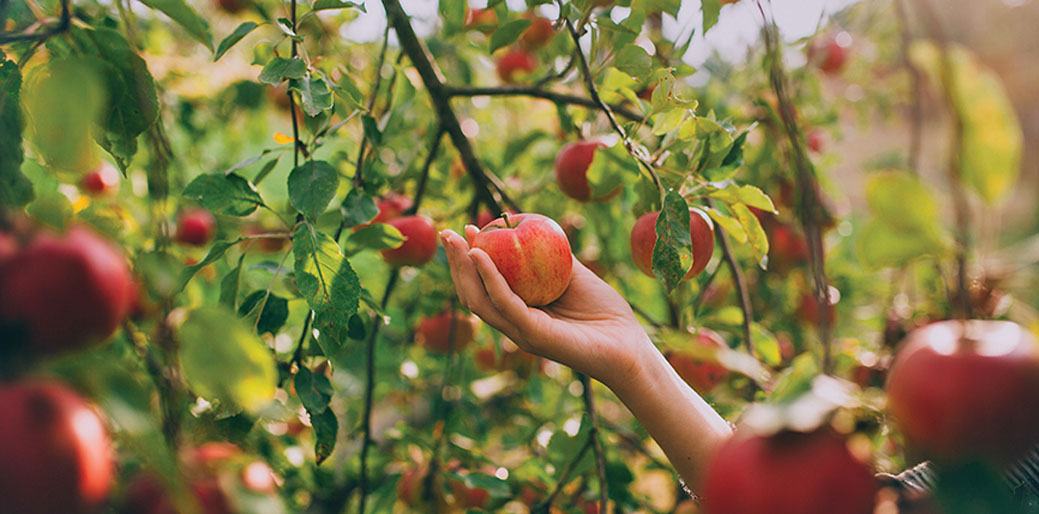 Acknowledgments Many thanks to the abundance of family and friends who offered support and willing palates during the tasting portion of creating this book. My husband, Dit, is always there to pick up dinner when Ive spent the day elbow deep in pies, pots, and pans. I couldnt do any of it without his quiet and consistent encouragement. To my girls Emily Bishop and Corinnethanks for always being good sports when mom is into her projects.
Acknowledgments Many thanks to the abundance of family and friends who offered support and willing palates during the tasting portion of creating this book. My husband, Dit, is always there to pick up dinner when Ive spent the day elbow deep in pies, pots, and pans. I couldnt do any of it without his quiet and consistent encouragement. To my girls Emily Bishop and Corinnethanks for always being good sports when mom is into her projects.
Thank you to Brett Ortler, Emily Beaumont, and Lora Westberg at AdventureKEEN for guiding me through this book and others. Cheers to all who celebrate the printed recipe! 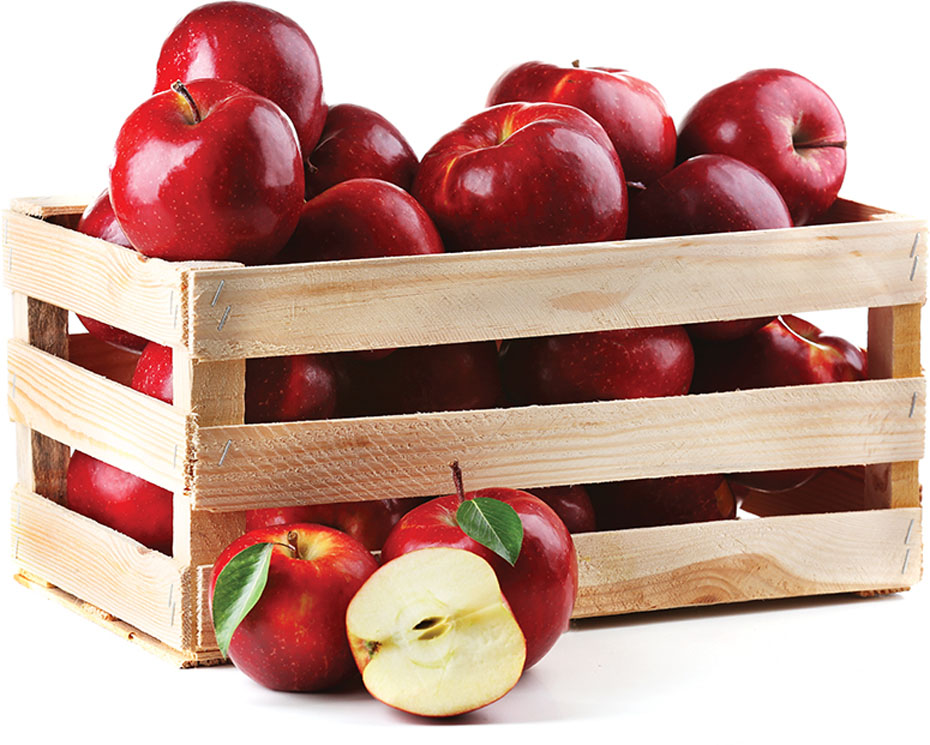
 Table of Contents
Table of Contents 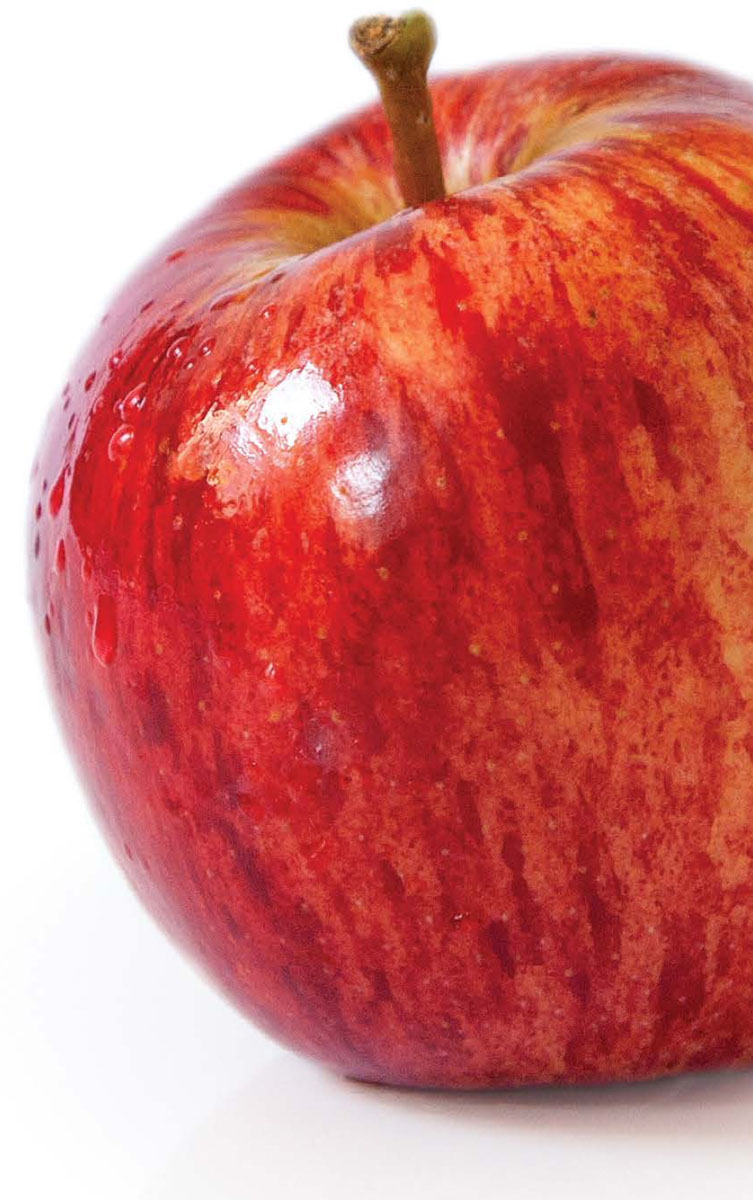 About Apples The familiar cracking sound as you bite into a ripe and juicy apple is about as mouthwatering as the fruits sweet-to-tangy flavor and flowery aroma. Its no wonder the humble apple is Americas favorite fruit. Apples originated in an area between the Caspian and Black Seas and archaeologists have evidence that humans have consumed apples for thousands of years. There are 7,500-plus varieties of apples grown worldwide. In the U.S., there are perhaps 2,500 varieties of apples, but only around 100 are grown commercially.
About Apples The familiar cracking sound as you bite into a ripe and juicy apple is about as mouthwatering as the fruits sweet-to-tangy flavor and flowery aroma. Its no wonder the humble apple is Americas favorite fruit. Apples originated in an area between the Caspian and Black Seas and archaeologists have evidence that humans have consumed apples for thousands of years. There are 7,500-plus varieties of apples grown worldwide. In the U.S., there are perhaps 2,500 varieties of apples, but only around 100 are grown commercially.
The only apple native to North America is the crabapple. Americans, per capita, enjoy apples more than any other type of fruit. About two-thirds of the U.S. apple crop is eaten as fresh fruit. Washington produces more than half of the apples grown in the U.S. Other top states include New York, Michigan, Pennsylvania, California, and Virginia.
About a quarter of harvested apples are exported. Apples are the second-most valuable fruit in the U.S., behind oranges. Some of the most popular varieties include Honeycrisp, Gala, Fuji, and Granny Smith. For decades, Red Delicious was the most-consumed apple in the U.S., thanks in part to its toughness and resistance to damage (making shipping easier), but its popularity has waned as newer varieties have been introduced to the market. Apple growers can produce new types of apples reasonably quickly by grafting growing tips of a new variety onto existing trees. Johnny Appleseed was a real person! Frontier nurseryman John Chapman traveled through the American Midwest in the early 1800s, planting nurseries of apple trees (not just planting apple seeds at random).
Apple trees require several years (sometimes up to a decade) before producing their first fruit. Apple blossoms are usually pink when they first open, fading to white. The blooms appear late in spring, which minimizes frost damage. That means apple trees can grow farther north than many other fruits. One apple tree even survived a winter (albeit in an unheated greenhouse) at 68 degrees north latitude in the Northwest Territories of Canada! You can grow an apple tree from an apple seed, but it will not produce the same apple variety (say, Honeycrisp) of the original fruit. Thats because apple trees require cross-pollination to produce fruit, so the apple seed is the product of the original apple tree (the Honeycrisp) and the apple tree that provided the necessary cross-pollination.
Most apples are still harvested by hand in the fall. Apples have five seed pockets called carpels. The small spots all over the apple skin (and on other fruits like pears and grapes) are lenticelssmall pore-like openings that help a plant breathe. Youll easily see them on potatoes and mangoes too. Apples float because around 25 percent of their volume consists of air, making them ideal for bobbing in a tub of water. Apples ripen 6 to 10 times faster at room temperature than when refrigerated.
One gallon of apple cider is made from about 36 apples. Apples produce their own natural wax to help the fruit retain moisture and firmness. The natural wax is occasionally white and powdery looking but can be buffed until it shines. Some producers spray additional food-grade wax to replace any wax lost to washing because the protective coating makes them easier to store and enhances their shininess. How to Buy Look, touch, and smell are the senses youll need to select the perfect apple. Look: Inspect the apple for any bruises or nicks in the skin.
Except for the yellow and green varieties, such as Golden Delicious and Granny Smith, most apples are fully ripe when most of the fruit is red. Apples wont often be one solid color. Buy the ones most covered in red, or allow them to further ripen before using. Dull apples are typically overripe. Lenticels are the small pores that allow gases to pass between the flesh of the fruit and the skin. They look like speckles.
The more lenticels, the sweeter the apple. Touch: Make sure the apple is firm to the touch with no soft spots. Different varieties are firmer than others, but a soft apple is usually overripe. Smell: Apples should smell fresh and pleasant; avoid those with fermented or rotten aromas. Does size matter? Not really, except when it comes to the number/weight you need to purchase, or the effort required to peel them. Organic apples are smaller than their conventional counterparts.
Apple equivalents: 1 pound = about 2 large or 3 medium-size apples 1 pound = 2 to 3 cups chopped 2 to 2 pounds = enough for a 9-inch pie Best Uses Snacking and eating raw: Ambrosia, Braeburn, Cameo, Cortland, Cripps Pink (branded as Pink Lady), Empire, Fuji, Gala, Golden Delicious, Granny Smith, Honeycrisp, Jazz, Jonagold, Macoun, SugarBee, SweeTango, Winesap Why? In general, these apples dont brown quickly when cut, so they make a good choice in lunch boxes and snack bags. Salads: Ambrosia, Cortland, Fuji, Gala, Honeycrisp, Jonagold Why? For salads, apples should hold their shape and be resistant to browning. They will add a touch of sweetness to slaws, green spring mixes, or spinach blends. Pies and other baked goods: Braeburn, Crispin or Mutsu, Golden Delicious, Granny Smith, Honeycrisp, Idared, Jonagold, Jonathan, Macoun, McIntosh, Northern Spy, Pink Lady Why? Apples used in pies and other baked goods should stay firm and hold their shape. Avoid varieties like Red Delicious or Gala that break down in high oven temperatures. Overly juicy apples (like Fuji or McIntosh) tend to make runny fillings that will require additional thickenerscornstarch or flour.
Next page
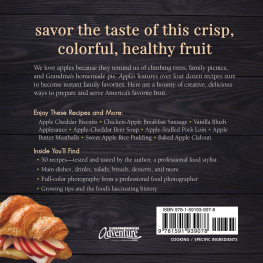
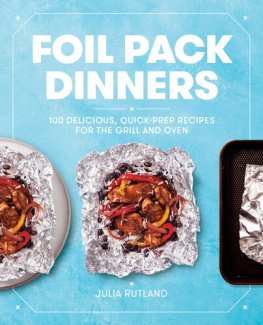
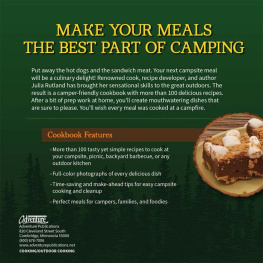

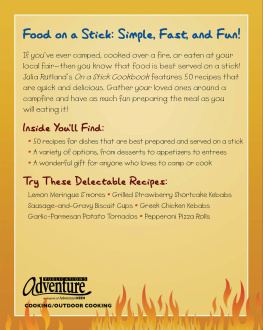
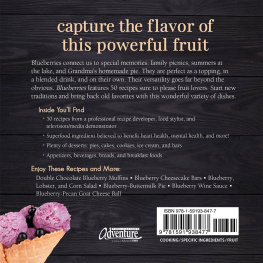
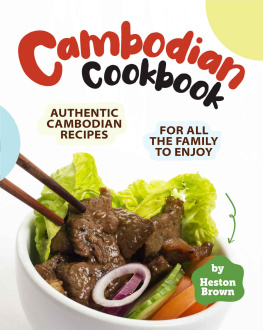
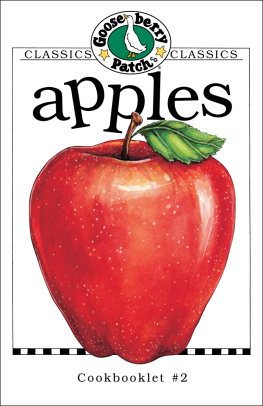
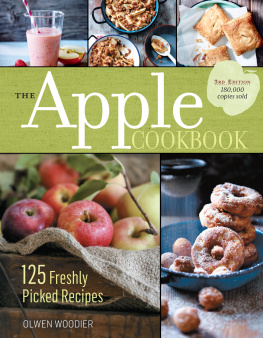

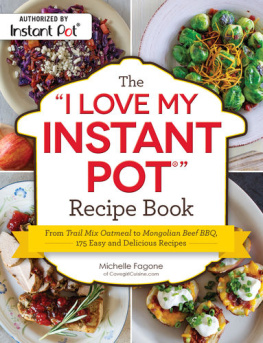
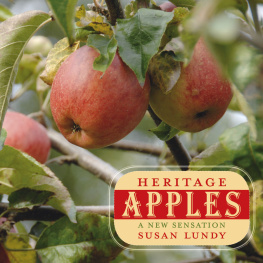
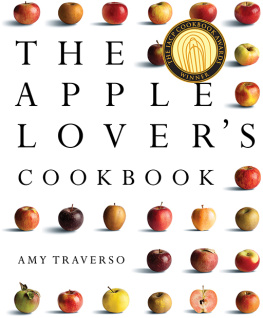


 Cover and book design by Lora Westberg Edited by Emily Beaumont Cover images: All images by Julia Rutland All images copyrighted. All images by Julia Rutland unless otherwise noted. Africa Studio/ Photos identified by page in alphabetical order using a, b, c, d, e, f Used under license from Shutterstock.com: Potapov Alexander: These images are licensed under the CC0 1.0 Universal (CC0 1.0) Public Domain Dedication license, which is available at https://creativecommons.org/publicdomain/zero/1.0/: USDA, artist Royal Charles Steadman: Northern Spy, 20; USDA, artist Deborah Griscom Passmore: Winesap, 21 Cosmic Crisp image used courtesy of The Cosmic Crisp Team : 17; SugarBee image used courtesy of Chelan Fresh (www.chelanfresh.com): 21 10 9 8 7 6 5 4 3 2 1 Apples: 50 Tried & True Recipes Copyright 2020 by Julia Rutland Published by Adventure Publications An imprint of AdventureKEEN 330 Garfield Street South Cambridge, Minnesota 55008 (800) 678-7006 www.adventurepublications.net All rights reserved Printed in China ISBN 978-1-59193-907-8 (pbk.); ISBN 978-1-59193-908-5 (ebook)
Cover and book design by Lora Westberg Edited by Emily Beaumont Cover images: All images by Julia Rutland All images copyrighted. All images by Julia Rutland unless otherwise noted. Africa Studio/ Photos identified by page in alphabetical order using a, b, c, d, e, f Used under license from Shutterstock.com: Potapov Alexander: These images are licensed under the CC0 1.0 Universal (CC0 1.0) Public Domain Dedication license, which is available at https://creativecommons.org/publicdomain/zero/1.0/: USDA, artist Royal Charles Steadman: Northern Spy, 20; USDA, artist Deborah Griscom Passmore: Winesap, 21 Cosmic Crisp image used courtesy of The Cosmic Crisp Team : 17; SugarBee image used courtesy of Chelan Fresh (www.chelanfresh.com): 21 10 9 8 7 6 5 4 3 2 1 Apples: 50 Tried & True Recipes Copyright 2020 by Julia Rutland Published by Adventure Publications An imprint of AdventureKEEN 330 Garfield Street South Cambridge, Minnesota 55008 (800) 678-7006 www.adventurepublications.net All rights reserved Printed in China ISBN 978-1-59193-907-8 (pbk.); ISBN 978-1-59193-908-5 (ebook)  Acknowledgments Many thanks to the abundance of family and friends who offered support and willing palates during the tasting portion of creating this book. My husband, Dit, is always there to pick up dinner when Ive spent the day elbow deep in pies, pots, and pans. I couldnt do any of it without his quiet and consistent encouragement. To my girls Emily Bishop and Corinnethanks for always being good sports when mom is into her projects.
Acknowledgments Many thanks to the abundance of family and friends who offered support and willing palates during the tasting portion of creating this book. My husband, Dit, is always there to pick up dinner when Ive spent the day elbow deep in pies, pots, and pans. I couldnt do any of it without his quiet and consistent encouragement. To my girls Emily Bishop and Corinnethanks for always being good sports when mom is into her projects.
 Table of Contents
Table of Contents  About Apples The familiar cracking sound as you bite into a ripe and juicy apple is about as mouthwatering as the fruits sweet-to-tangy flavor and flowery aroma. Its no wonder the humble apple is Americas favorite fruit. Apples originated in an area between the Caspian and Black Seas and archaeologists have evidence that humans have consumed apples for thousands of years. There are 7,500-plus varieties of apples grown worldwide. In the U.S., there are perhaps 2,500 varieties of apples, but only around 100 are grown commercially.
About Apples The familiar cracking sound as you bite into a ripe and juicy apple is about as mouthwatering as the fruits sweet-to-tangy flavor and flowery aroma. Its no wonder the humble apple is Americas favorite fruit. Apples originated in an area between the Caspian and Black Seas and archaeologists have evidence that humans have consumed apples for thousands of years. There are 7,500-plus varieties of apples grown worldwide. In the U.S., there are perhaps 2,500 varieties of apples, but only around 100 are grown commercially.